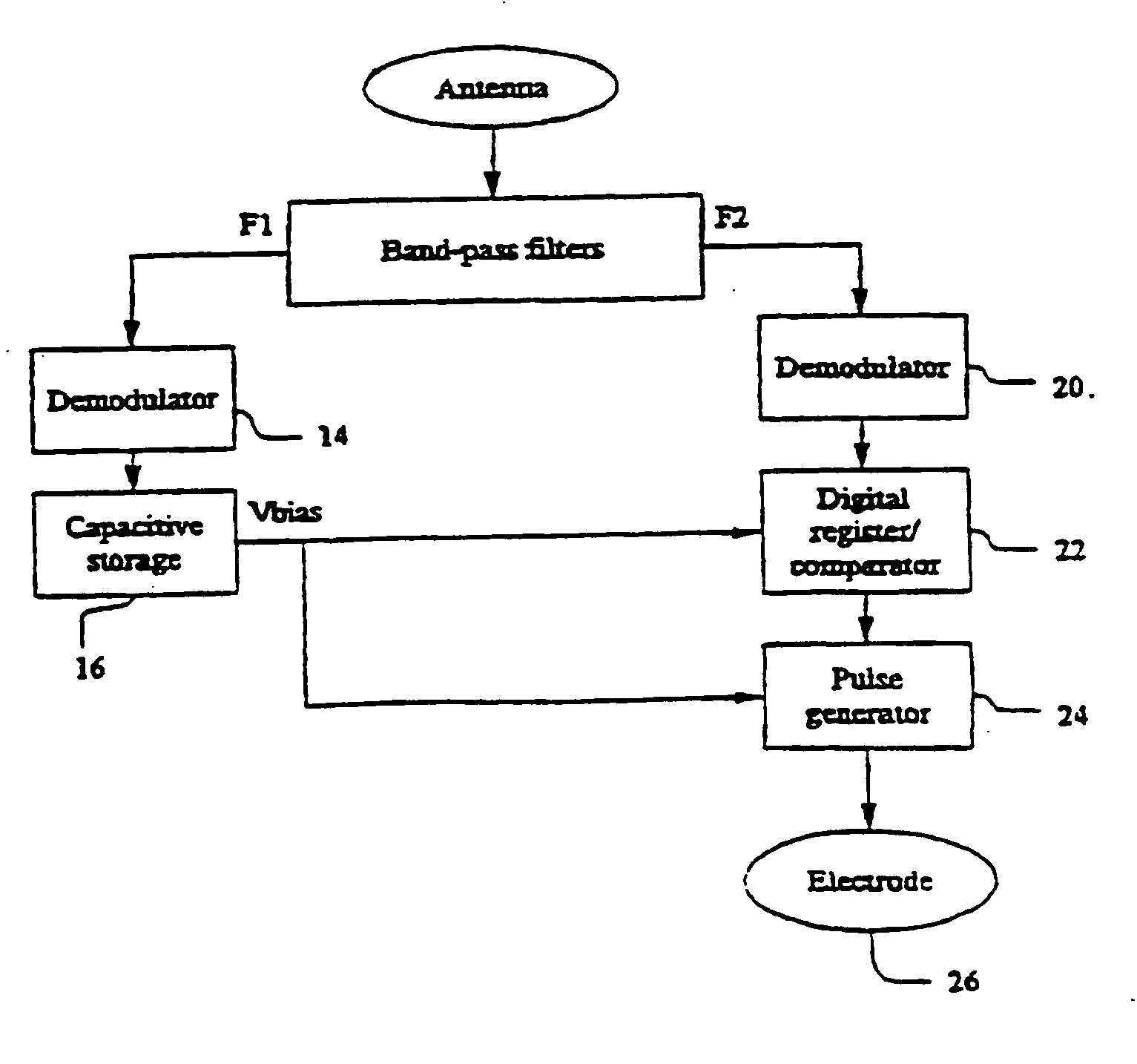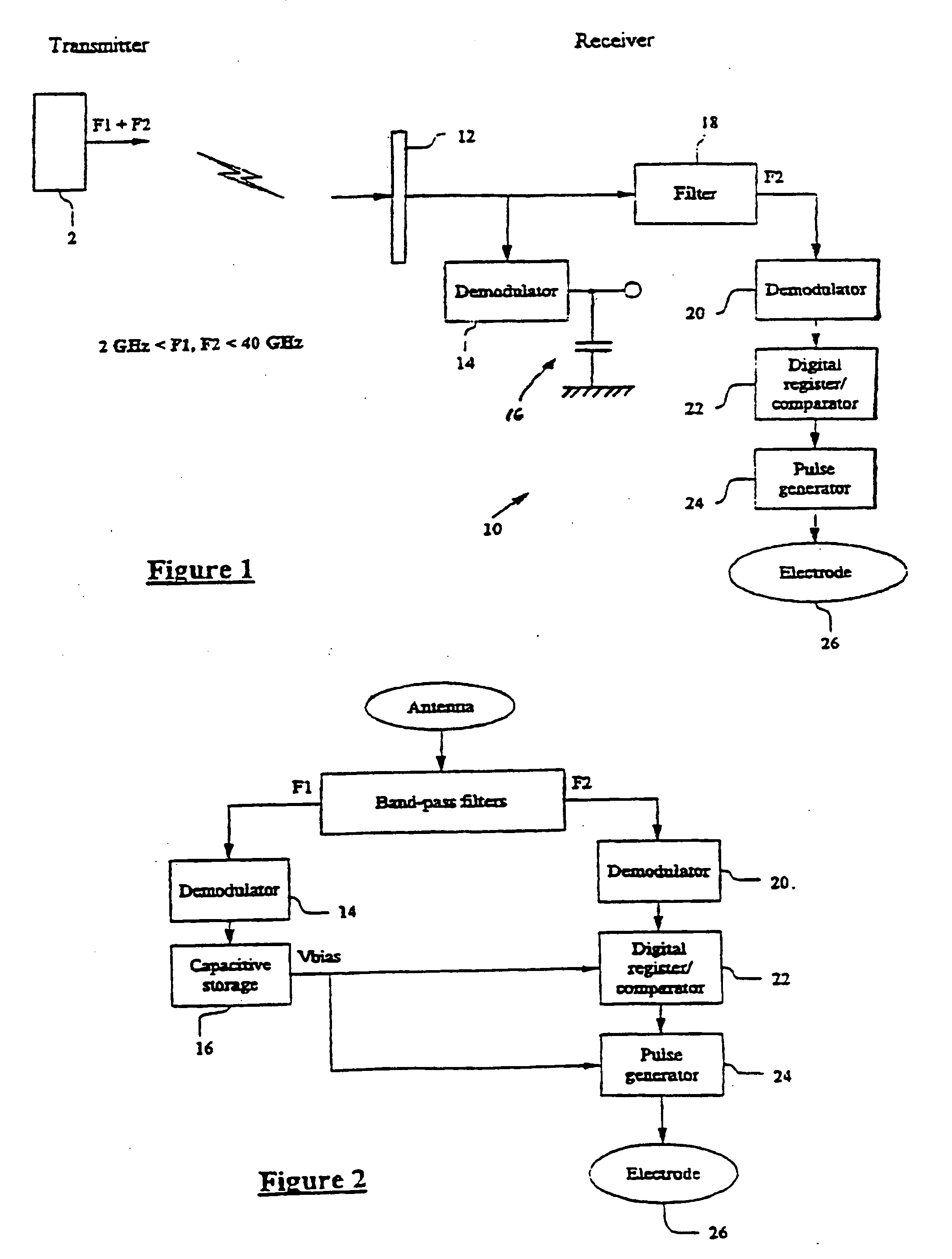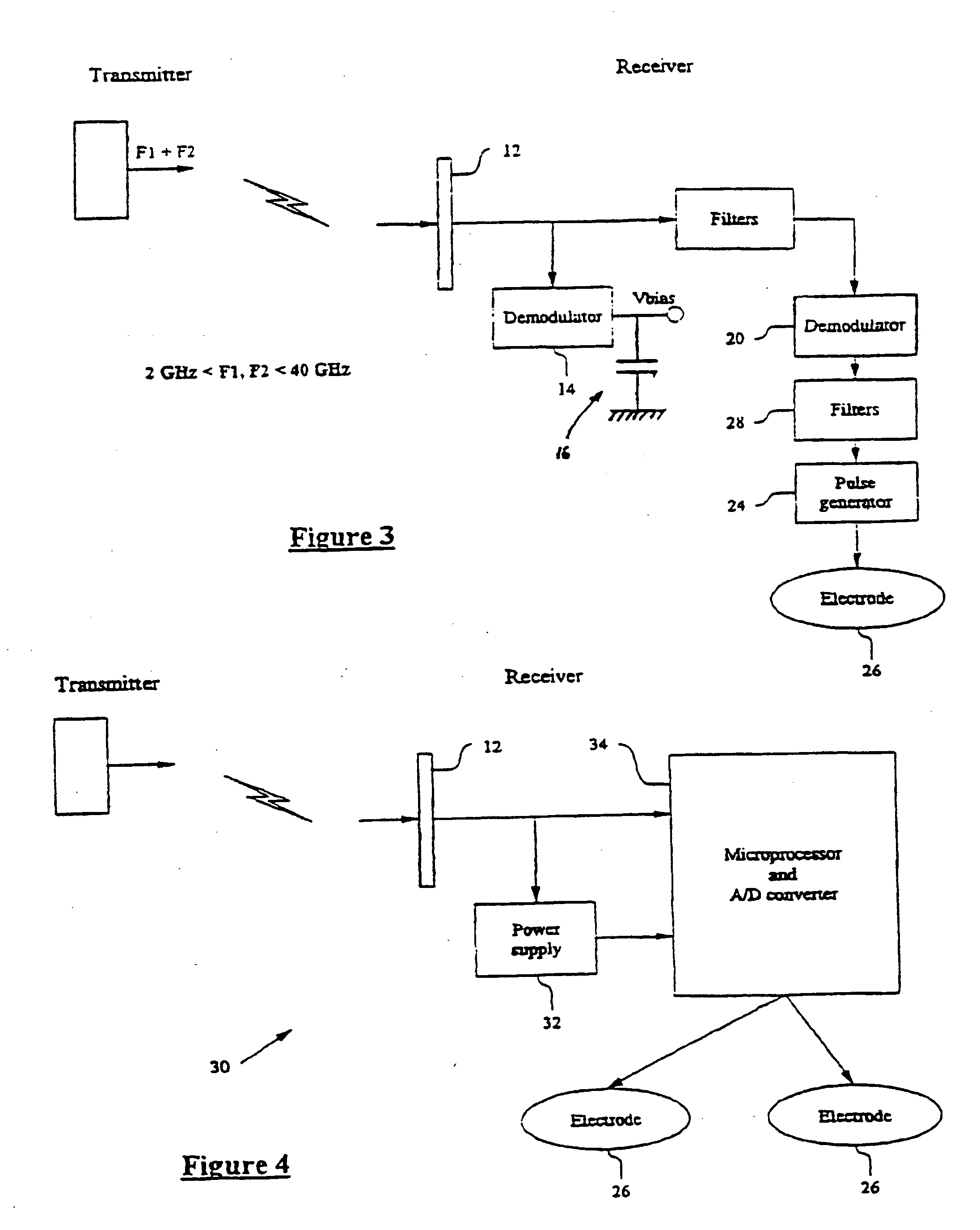Medical implant system
a technology of implanted implants and implants, which is applied in the field of medical implant systems, can solve the problems of limiting the application of devices, the implementation nature of devices, and the loss of the ability of the world to control muscle contraction, so as to improve patient comfor
- Summary
- Abstract
- Description
- Claims
- Application Information
AI Technical Summary
Benefits of technology
Problems solved by technology
Method used
Image
Examples
example 1
[0156] A microwave patch antenna 17 by 17 mm area with a separating dielectric of relative permittivity 10.2 and 1.905 mm thickness was fabricated, coated with Dow Corning Silicone polymer and placed inside a moist piece of fatty tissue / skin at a depth of 10 mm.
[0157] The antenna was excited with electromagnetic radiation of 500 milliwatts from a transmitter and the frequency varied near 2.5 GHz to establish the optimum resonant frequency. The power received at the antenna was measured using a microwave power meter when the transmitter was at 12 and 50 cm and found to be 10 mW and 1.6 mW and at 12 cm the output of the antenna was recitified with a full wave bridge and showed a voltage of 2.5 volts.
example 2
[0158] A microwave patch antenna 29 by 29 mm area with a separating dielectric of relative permittivity 10.2 and 1.905 mm thickness was fabricated, coated with Dow Corning Silicone polymer and placed inside a moist piece of fatty tissue / skin at a depth of 10 mm.
[0159] The antenna was excited with electromagnetic radiation of 500 milliwatts from a transmitter and the frequency varied near 1.5 GHz to establish the optimum resonant frequency. The power received at the antenna was measured using a microwave power meter when the transmitter was at 12 and 50 cm and found to be 25 mW and 3.2 mW and at 12cm the output of the antenna was rectified with a full wave bridge and showed a voltage of 2.3 volts. The thickness of the fatty tissue was then increased to 20mm and the test repeated and showed at 50 cm a power output of 2.5 mW and at 100 cm a power output of 0.4 mW.
example 3
[0160] A microwave patch antenna 33 by 33 mm area with a separating dielectric of relative permittivity 2.2 and 1.58 mm thickness was fabricated, coated with Dow Corning Silicone polymer and placed inside a moist piece of fatty tissue / skin at a depth of 10 mm. The antenna was excited with electromagnetic radiation of 500 milliwatts from a transmitter and the frequency varied near 2.5 GHz to establish the optimum resonant frequency. The power received at the antenna was measured using a microwave power meter when the transmitter was at 12 and 50 cm and found to be 10 mW and 0.8 mW and at 12 cm the output of the antenna was rectified with a full wave bridge and showed a voltage of 2.6 volts.
PUM
 Login to View More
Login to View More Abstract
Description
Claims
Application Information
 Login to View More
Login to View More - R&D
- Intellectual Property
- Life Sciences
- Materials
- Tech Scout
- Unparalleled Data Quality
- Higher Quality Content
- 60% Fewer Hallucinations
Browse by: Latest US Patents, China's latest patents, Technical Efficacy Thesaurus, Application Domain, Technology Topic, Popular Technical Reports.
© 2025 PatSnap. All rights reserved.Legal|Privacy policy|Modern Slavery Act Transparency Statement|Sitemap|About US| Contact US: help@patsnap.com



